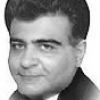Shift in form of governance could trigger other conflicts
A regime change, unlike a new government, alters the form of governance, eg from autocracy to democracy.
A regime change, unlike a new government, alters the form of governance, eg from autocracy to democracy.
India and Sri Lanka have had only one regime type — democracy. Pakistan has used a dozen and may hold the world record for most such changes since 1947.
Pakistan had unrigged democracy until 1951, then bureaucratic oligarchy until 1958, and then a presidential system until 1969. Pakistan then saw military rule until 1971, then unrigged democracy until 1977, then military rule until 1985 and then a hybrid system until 1988. Pakistan then had rigged democracy until 1999, then military rule till 2002 and then a hybrid system till 2008. Unrigged democracy then prevailed until 2018.
Many call the current era a third democratic transition. But I call it a reversal to the rigged ’90s politics.
Of these changes, five are crucial — 1951, 1977 and 2018 when unrigged democracy succumbed to fixed systems, and two when rigged systems gave way to broadly free polls (1971 and 2008). With the other changes during 1951-1971 and 1977-2008, the establishment still picked rulers.
Stable democracies and autocracies share a stable balance of power between their various power factions.
In states that see many government changes, eg Italy, no faction can assert itself over others for long. But where regime types often change, a deeper problem exists. Not only is there no stable balance of power, but some factions can rig rules often and change regime types to extend their hold. But no single person or faction rules for very long even so.
Generals Suharto, Tito and Franco ruled for decades. Uniformed but uninformed about statecraft, like their peers globally, they caused much damage.
The longest their peers have been able to (mis)rule Pakistan is 11 years. So both Pakistan’s democracies and autocracies don’t sustain.
With democracy, sages say misrule forces those in uniforms and robes to step in, and that it will sustain if politicians rule well. They give Turkey’s example. But I prefer that of Bangladesh, where democracy is stable despite abysmal elected rule.
Democratic struggles usually involve class (elites vs masses) or ethnicity (elite vs weak ones).
Pakistan’s and Bangladesh’s democratic struggles have seen both. West wing elites avoided polls before ’71 given a Bengali majority. But after Punjab assumed a majority, polls became more common.
Ethnicity still played a role in Bhutto’s removal by Zia. But the Punjab-heavy though Mohajir-led army removed Punjab’s son Sharif too.
Thus, class conflict seems more salient after ’71, but not of the classic elites vs masses type.
In rich states, upper and middle classes share economic interests and unite against the poor. But in Pakistan’s, the wealth accumulation modes of the upper and middle classes conflict.
Upper-class elites don’t need merit and are seen to thrive more via sleaze. The middle classes thrive mostly on merit which isn’t accessible to all. The poor can’t attain merit.
So Pakistan’s class struggles oddly ally the rich and poor. Upper-class landowners (Bhuttos) and industrialists (Sharifs) co-opt the hapless poor via patronage, leaving middle classes grumpy with politics.
I prefer the rich-poor alliance, despite its obvious problems, over the middle class one given the latter’s naïve notions about politics. With upper-class wealth linked to the poor’s numbers, one would expect Pakistan’s middle class to be shut out politically. Yet, citing civilian misrule, it has ruled often through hard and soft coups via the strong institutional middle class wearing uniforms and robes. But its bigger misrule allows upper classes to return via fair polls.
The 2018 coup was soft and subtle, with robes and uniforms likely involved. Middle classes now rule the twin cities. This may produce regime stability. Yet, latent conflicts exist between institutional and private middle classes too that may erupt soon.
The near impossibility of anyone being able to rule Pakistan may undermine this regime too. The PTI faces a unique double jeopardy. Its top leaders are middle class but it has co-opted many traditional elites to win. Thus, it’s the only party that must perform the impossible task of satisfying both the woolly demands for rapid change of the merit-obsessed middle class and the patronage needs of traditional elites and their poor clients.
It’s almost damned if it does or doesn’t. If it tries reforms, it pleases middle classes but angers its traditional allies.
Since reforms will likely fail given entrenched elite power and the PTI’s low capacity, it may end up irking all.
If it doesn’t treat the current economic ills, it will create a meltdown. If it treats them it will still harm and irk all. It’s unfair on the PTI as PML-N created the mess. But some say it’s poetic justice and just penance for it for unseating the PML-N via dubious polls. So, political instability will likely persist.
By arrangement with Dawn



















